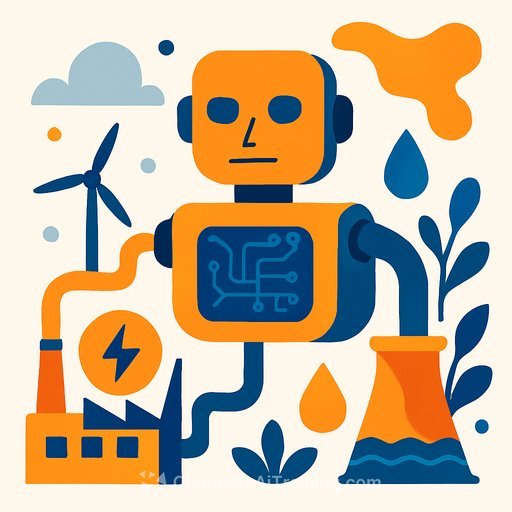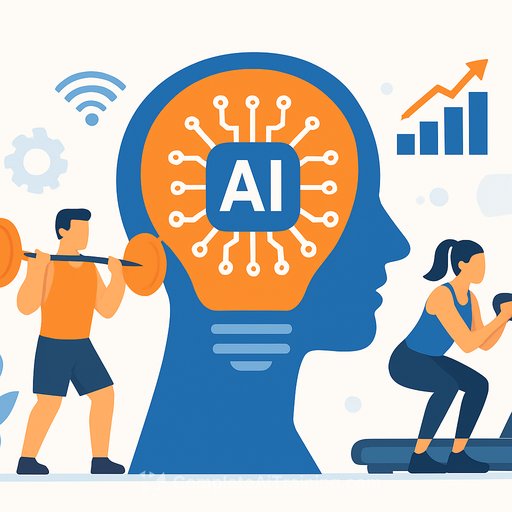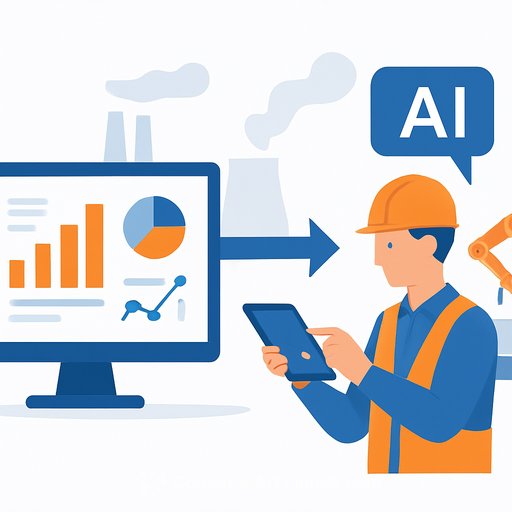Why Ecolab CEO Links Water and AI for Data Centre Efficiency
Performance is everything. That was the message from Christophe Beck, CEO of Ecolab, as he connected water stewardship with AI-driven operations at Climate Week NYC.
His thesis is straightforward: AI growth will strain thermal and energy limits unless facilities reuse water and energy at scale-the way nature already does. For operations leaders, that means tighter cooling loops, less waste, and measurable gains in uptime and sustainability.
Water positivity as an operating strategy
Ecolab has built its sustainability approach around water. In its 2024 impact report, the company reports 226 billion gallons saved for customers and management of one trillion gallons across client sites. The 2025 target is 234 billion gallons, with 74% already achieved.
Inside its own footprint, Ecolab cut water impact intensity by 29%, on track for 40% by 2030. Beck underscores the scale of influence: "Just 150 companies can influence one-third of the world's supply."
- Smart Water Navigator: Free tool to map site-level water risk and prioritise action.
- Water Track IQ: Identifies and quantifies savings opportunities.
- 3D TRASAR Technology: Drives measurable interventions in treatment and control.
- ECOLAB3D: Tracks performance to sustain gains across facilities.
The water-energy-emissions link
Moving, cooling, heating, and treating water consumes energy. Cut water demand and you cut energy use and emissions-especially in heat-rejection systems.
Ecolab reports a 33% reduction in Scope 1 and 2 emissions, 71% of electricity from renewables, and 3.6 million metric tonnes of emissions avoided. By 2030, the goal is to help customers avoid 6 million metric tonnes per year through smarter water use.
Beyond data centres, the company's expertise extends across industrial processes. With Nalco Water, a Brazilian sugar and ethanol producer reduced sulphuric acid use by 22% and implemented end-to-end water waste treatments from primary clarification to discharge.
For broader best practices, see the U.S. Department of Energy's guidance for data centre efficiency here.
AI for cooling: practical gains for operations
Ecolab adapts its solutions for data centres with AI that optimises cooling loops, monitors system health, and smooths overall energy load. The objective: reduce cooling energy and route recovered heat where it adds value, while maintaining uptime.
This sits inside a circular approach-reduce, reuse, reclaim. Water savings support energy savings, and vice versa, creating a compounding effect in both OPEX and sustainability KPIs.
"Cooling efficiency is the biggest factor we are focused on right now," says Nevin Sant, Global Vice President of Research & Development at Ecolab. He adds that controlling thermal demand is essential to keep energy and water use in check.
Operator playbook: turn strategy into results
- Baseline the system: Meter chillers, cooling towers, and make-up water. Track PUE, WUE, approach temperature, cycles of concentration, delta-T across coils, and kW/ton.
- Assess risk and opportunity: Use Smart Water Navigator for site-level water risk. Deploy Water Track IQ to quantify savings. Target quick wins before capital upgrades.
- Automate control loops: Apply AI-driven setpoints for chiller lift, condenser water temperature, VFD speeds, and tower fan staging to reduce energy draw and chemical use.
- Tighten water chemistry: Use 3D TRASAR for scale/corrosion control and blowdown optimisation. Increase cycles of concentration within safe limits to cut make-up demand.
- Close the loop: Reuse condensate where permitted, reclaim blowdown with treatment, and recover heat to preheat air or water for adjacent loads.
- Sustain the gains: Track KPIs in ECOLAB3D, integrate with BMS/CMMS, and build alarms for drift, leaks, and abnormal make-up. Standardise SOPs and weekly reviews.
Metrics that matter
- PUE, WUE, and CUE: Keep all three in view to balance energy, water, and emissions.
- Cooling plant efficiency: kW/ton, chiller lift, condenser approach, and pump/fan kW.
- Water system health: Cycles of concentration, blowdown rate, make-up volume, and leak detection rate.
- Energy sourcing: % renewable electricity and site-level emissions factors.
Why this matters for your roadmap
AI growth is increasing thermal density and tightening site constraints. Water-smart cooling provides headroom-lower energy draw, lower water use, and more resilient operations.
Beck's challenge is clear: use collaboration to move faster. Connect the right tools, commit to measurable action, and lead on water and growth.
If you're upskilling your team on practical AI for operations, explore curated learning paths by job role here.
Your membership also unlocks:






